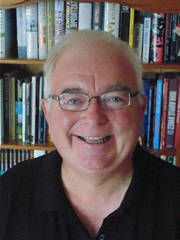Tutor HuntResources History Resources
Nazi Propaganda - Case Study Leni Riefenstahl
Leni Riefenstahl made the Nazi`s finest propaganda film `Triumph of the Will` his short articles looks at her impact
Date : 11/01/2016
Leni
Riefenstahl made what is considered by many historians to be the greatest
propaganda film of all time ‘Triumph of the Will’ (1934). Riefenstahl was an
actress in Hitler’s Germany
and she was asked by Hitler personally to make a film of the Nazi party rally
in Nuremberg
for the party itself. As so many times in the Third Reich this ‘project’ was
outside of hierarchies and structures and for once was not under the control of
Joseph Goebbels and the propaganda ministry. Goebbels’ relationship with
Riefenstahl is a strange one, Riefenstahl always claimed that she did not get
on well with Goebbels and certainly he was furious that Riefenstahl was working
outside of his control as Propaganda Minister. Entries in Goebbels’ diaries
indicated otherwise but the diaries are not a reliable source as Goebbels wrote
them for posterity so they are more reliable than the rest of Nazi propaganda. In
fact Riefenstahl made two films of Nazi party rallies, the first made in 1933
was not completed but is fascinating as it shows that even the Nazi’s had to
learn how to be Nazi’s. As surviving clips from the first film show the organisation
of the rally was poor and there are moments where there is confusion. The one
person who never allows himself to look anything else but in control is Hitler
himself, always calm, always in command and always aware of the camera and its
importance. The 1934 film is by contrast a masterpiece, Riefenstahl and her
camera team were allowed unprecedented control to the extent that what should
be a documentary looks like a film set. Events are clearly staged for the
camera and Riefenstahl ‘directs’ the participants. At one point she put a
circular track around Hitler so that the camera could move around him while he
gave his speech. This would have been distracting for the assembled Nazi’s but
it electrifies Hitler’s already commanding. performance.
The final step was the editing of the film, Riefenstahl spent hundreds of hours
editing the film footage to make it more exciting and the result was a film
that made Nazism look impressive. Riefenstahl always claimed that she was not
interested in politics only in the art of film but she contributed
significantly to the power of Nazism through Triumph of the Will.In
1936 Riefenstahl was asked to film the Berlin Olympics, a film that eventually
appeared in two parts as ‘Olympiad’ in 1938. Again Riefenstahl was granted
unprecedented access both before and during the Olympics. She took the German
track and field athletes up to the Baltic coast and filmed them with special
cameras and high speed film. By shooting
low to high against a cloudy sky she makes the athletes look godlike. Thus at
the start of the film a Greek statue of a discus thrower melds into the slow
motion actions of the German athlete and discus thrower. The accusation against
Riefentahl here is that she reinforced Hitler’s racial stereotypes and the
concept of the Master Race and gave them legitimacy by comparing them to the
Greeks. Riefenstahl always strenuously denied this accusation claiming again
that what she wanted to make was an artistic film that was exciting. The same
approach was used throughout the Olympics with Riefenstahl able to get pits dug
next to the pole vault to film low to high. She also pioneered the use of
moving camera’s that followed the runners on a rail next to the track a
techniques not seen again until the 1980’s. Two years in the editing the final
pair of films are a masterpiece. Riefenstahl paid a heavy price for her
involvement with the Nazi’s as for twenty years after the war no one would work
with her, the greatest punishment that could be imposed on her, denying her the chance to continue her obsession with film, an obsession that was so important to who she was.
This resource was uploaded by: Paul
Other articles by this author
- Winston Churchill - The Wilderness Years after 1929
- Pacifism in France between WW1 and WW2
- The Quality of Soldiers in WW1 - Case study the French Army
- Garibaldi as a Military thinker and general
- The Haldane Reforms - planning for the First World War
- How important was Generalship and Leadership in the First World War?
- How important were alliances in determining the outcome of the First World War?
- How important were alliances in the Second World War
- The French revolution for war studies
- The Russo – Japanese War an introduction for A level History
- How well did Governments organise their resources during the Second World War
- American West - Why Did the Second Fort Laramie Treaty break down
- To what extent and in what ways did Communism transform East Germany
- East Germany - State Church and Youth
- How to help you son or daughter with their GCSE History Homework

